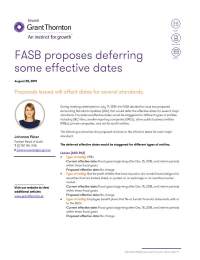-
Financial statements audits
Financial statement audits
-
Compliance audits
Compliance audits
-
Compilations and reviews
Compilations and audit
-
Agreed-upon procedures
Agreed-upon procedures
-
Tax compliance
Business Tax
-
Global mobility services
Through our global organisation of member firms, we support both companies and individuals, providing insightful solutions to minimise the tax burden for both parties.
-
Sales and use tax and indirect taxes
SUT/ VAT & indirect taxes
-
Tax incentives
Navigating the complex landscape of tax incentives in Puerto Rico can be challenging. Whether you're looking to benefit from the Export Services Act (Act 20), the Individual Investors Act (Act 22), or other incentives under Act 60, we provide tailored advice to help you maximize your tax benefits and ensure compliance. Let us help you unlock the potential of doing business in Puerto Rico.
-
Transfer Pricing
The laws surrounding transfer pricing are becoming ever more complex, as tax affairs of multinational companies are facing scrutiny from media, regulators and the public

-
Business consulting
Our business consulting services can help you improve your operational performance and productivity, adding value throughout your growth life cycle.
-
Business Risk Advisory
Risk is inevitable but manageable. We deliver relevant, timely and practical advices to aid organizations manage risk and improve business performance. We can help you identify, understand and manage potential risks to safeguard your business and comply with regulatory requirements.
-
Technology Advisory
We provide comprehensive solutions to safeguard your business and ensure operational resilience and compliance. Our expert team offers a range of technology advisory services designed to address your cybersecurity needs, enhance business continuity, and manage security effectively.
-
Transactional advisory services
Transactions are significant events in the life of a business – a successful deal that can have a lasting impact on the future shape of the organizations involved. Because the stakes are high for both buyers and sellers, experience, determination and pragmatism are required to bring deals safely through to conclusion.
-
Forensic and investigative services
At Grant Thornton, we have a wealth of knowledge in forensic services and can support you with issues such as dispute resolution, fraud and insurance claims.

Proposals issued will affect dates for several standards.
During meeting celebrated on July 17, 2019, the FASB decided to issue two proposed Accounting Standards Updates (ASU) that would defer the effective dates for several major standards. The deferred effective dates would be staggered for different types of entities, including SEC filers, smaller reporting companies (SRCs), other public business entities (PBEs), private companies, and not-for-profit entities.
The following summarizes the proposed revisions to the effective dates for each major standard:
The deferred effective dates would be staggered for different types of entities.
Leases (ASC 842)
- Type of entity: PBEs
Current effective date: Fiscal years beginning after Dec. 15, 2018, and interim periods within those fiscal years
Proposed effective date: No change
- Type of entity: Not-for-profit entities that have issued or are conduit bond obligors for securities that are traded, listed, or quoted on an exchange or an over-the-counter market
Current effective date: Fiscal years beginning after Dec. 15, 2018, and interim periods within those fiscal years
Proposed effective date: No change
- Type of entity: Employee benefit plans that file or furnish financial statements with or to the SECs
Current effective date: Fiscal years beginning after Dec. 15, 2018, and interim periods within those fiscal years
Proposed effective date: No change
- Type of entity: All other entities
Current effective date: Fiscal years beginning after Dec. 15, 2019, and interim periods within fiscal years beginning after Dec. 15, 2020
Proposed effective date: Fiscal years beginning after Dec. 15, 2020, and interim periods within fiscal years beginning after Dec. 15, 2021
Credit losses (ASC 326)
- Type of entity: SEC filers (excluding SRCs)
Current effective date: Fiscal years beginning after Dec. 15, 2019, and interim periods within those fiscal years
Proposed effective date: No change
- Type of entity: SEC filers that are SRCs
Current effective date: Fiscal years beginning after Dec. 15, 2019, and interim periods within those fiscal years
Proposed effective date: Fiscal years beginning after Dec. 15, 2022, and interim periods within those fiscal years
- Type of entity: All other PBEs
Current effective date: Fiscal years beginning after Dec. 15, 2020, and interim periods within those fiscal years
Proposed effective date: Fiscal years beginning after Dec. 15, 2022, and interim periods within those fiscal years
- Type of entity: All other entities
Current effective date: Fiscal years beginning after Dec. 15, 2021, and interim periods within those fiscal years
Proposed effective date: Fiscal years beginning after Dec. 15, 2022, and interim periods within those fiscal years
Hedging (ASC 815, as amended by ASU 2017-12)
- Type of entity: PBEs
Current effective date: Fiscal years beginning after Dec. 15, 2018, and interim periods within those fiscal years
Proposed effective date: No change
- Type of entity: All other entities
Current effective date: Fiscal years beginning after Dec. 15, 2019, and interim periods within fiscal years beginning after Dec. 15, 2020
Proposed effective date: Fiscal years beginning after Dec. 15, 2020, and interim periods within fiscal years beginning after Dec. 15, 2021
Long-duration insurance contracts (ASC 944, as amended by ASU 2018-12)
- Type of entity: SEC filers (excluding SRCs)
Current effective date: Fiscal years beginning after Dec. 15, 2020, and interim periods within those fiscal years
Proposed effective date: Fiscal years beginning after Dec. 15, 2021, and interim periods within those fiscal years
- Type of entity: SEC filers that are SRCs
Current effective date: Fiscal years beginning after Dec. 15, 2020, and interim periods within those fiscal years
Proposed effective date: Fiscal years beginning after Dec. 15, 2023, and interim periods within fiscal years beginning after Dec. 15, 2024
- Type of entity: All other PBEs
Current effective date: Fiscal years beginning after Dec. 15, 2020, and interim periods within those fiscal years
Proposed effective date: Fiscal years beginning after Dec. 15, 2023, and interim periods within fiscal years beginning after Dec. 15, 2024
- Type of entity: All other entities
Current effective date: Fiscal years beginning after Dec. 15, 2021, and interim periods within fiscal years beginning after Dec. 15, 2022
Proposed effective date: Fiscal years beginning after Dec. 15, 2023, and interim periods within fiscal years beginning after Dec. 15, 2024
Definitions
Public business entity
As defined in the Master Glossary in the FASB’s Codification, a “public business entity” is a business entity meeting any one of the criteria below. Neither a not-for-profit entity nor an employee benefit plan is a business entity:
- it is required by the SEC to file or furnish financial statements, or does file or furnish financial statements (including voluntary filers), with the SEC (including other entities whose financial statements or financial information are required to be or are included in a filing).
- it is required by the Securities Exchange Act of 1934 (the Act), as amended, or rules or regulations promulgated under the Act, to file or furnish financial statements with a regulatory agency other than the SEC.
- it is required to file or furnish financial statements with a foreign or domestic regulatory agency in preparation for the sale of or for purposes of issuing securities that are not subject to contractual restrictions on transfer.
- it has issued, or is a conduit bond obligor for, securities that are traded, listed, or quoted on an exchange or an over-the-counter market.
- it has one or more securities that are not subject to contractual restrictions on transfer, and it is required by law, contract, or regulation to prepare U.S. GAAP financial statements (including notes) and make them publicly available on a periodic basis (for example, interim or annual periods). An entity must meet both of these conditions to meet this criterion.
An entity may meet the definition of a public business entity solely because its financial statements or financial information is included in another entity’s filing with the SEC. In that case, the entity is only a public business entity for purposes of financial statements that are filed or furnished with the SEC.
SEC filer
An “SEC filer” is defined in the Master Glossary as an entity that is required to file or furnish its financial statements with either of the following:
a. the SEC
b. with respect to an entity subject to Section 12(i) of the Securities Exchange Act of 1934, as amended, the appropriate agency under that Section
Financial statements for other entities that are not otherwise SEC filers whose financial statements are included in a submission by another SEC filer are not included within this definition.
Smaller reporting company
A “smaller reporting company” is defined in Rule 12b-2, Definitions, of the Securities Exchange Act of 1934; Rule 405, Definition of terms, in the Securities Act of 1933; and Item 10(f) of Regulation S-K. Refer to New Developments Summary 2018-09 for information about the definition of “smaller reporting company.”
Source:

